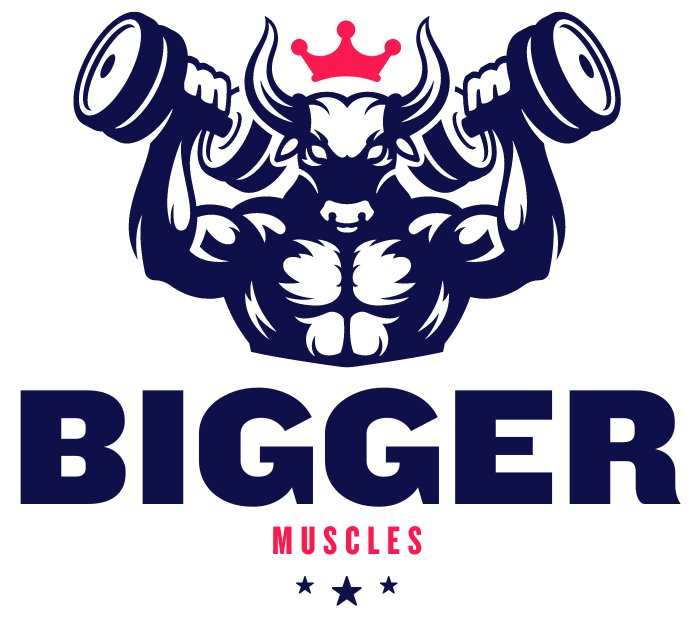Have you ever wondered what sets building strength apart from building muscle? While the goals may seem similar, there are key differences that can significantly impact your fitness journey. Building strength involves increasing the force your muscles can exert, which results in improved functionality and performance. On the other hand, building muscle involves hypertrophy, the process of enlarging individual muscle fibers for aesthetic purposes.
So, whether you aspire to become stronger or aim for a more muscular physique, understanding these distinctions will help you tailor your workouts to achieve your desired results.
Table of Contents
ToggleBuilding Strength vs Building Muscle

Understanding the Difference
When it comes to fitness and exercise, two common goals that many people have are building strength and building muscle. While they may seem similar, there are distinct differences between the two. Understanding these differences can help you tailor your workouts and achieve your desired results more effectively.
Definition of Strength
Strength, in the context of fitness, refers to the ability of your muscles to generate force. It is a measure of how much weight you can lift or how much resistance you can overcome. Strength is not necessarily determined by the size of your muscles, but rather by the neuromuscular adaptations that occur with training.
Definition of Muscle
On the other hand, muscle refers to the actual tissue in your body that allows for movement and generates force. Building muscle, or muscle hypertrophy, involves increasing the size of the muscle fibers through specific training stimulus. This is often what people refer to when they talk about “getting bigger” or “bulking up.”
Key Factors to Consider
When it comes to building strength or muscle, there are several key factors that you need to consider. These factors can greatly influence your progress and the results you achieve. Some of the main factors include genetics, training program, nutrition and caloric intake, recovery and rest, and hormonal influences.
Genetics play a significant role in determining your starting point and your potential for strength and muscle development. Some individuals may naturally have a higher capacity for strength gains, while others may have a genetic predisposition for muscle growth.
Your training program is also crucial in determining whether you focus more on building strength or muscle. Different training techniques and protocols can elicit different physiological responses in your body. For strength, high intensity and low volume workouts with heavy weightlifting and compound exercises are effective. For muscle building, moderate intensity and high volume workouts with hypertrophy-specific training and isolation exercises are commonly used.
Nutrition and caloric intake are essential in providing your body with the necessary fuel and nutrients to support muscle growth and strength gains. Properly fueling your body with adequate protein, carbohydrates, and healthy fats is crucial to optimize your results.
Recovery and rest are often overlooked but are vital components of any training program. Your muscles need time to repair and rebuild after intense workouts. Adequate sleep and rest days are necessary to allow for proper recovery and to prevent overtraining.
Hormonal influences, such as testosterone and growth hormone, can also play a role in strength and muscle development. Factors like age, sex, and overall health can affect these hormonal levels, which in turn can impact your progress.
Training Techniques for Strength
To specifically focus on building strength, there are several training techniques you can incorporate into your workouts. High intensity and low volume workouts that involve heavy weightlifting are key. Compound exercises, which target multiple muscle groups simultaneously, are also highly effective for building overall strength. Adequate rest and recovery between workouts is important to allow your muscles to repair and adapt. Additionally, progressive overload, gradually increasing the weight or resistance over time, is crucial to continue challenging your muscles and stimulating strength gains.
Training Techniques for Muscle
If your goal is to primarily build muscle, there are different training techniques that can help you achieve this. Moderate intensity and high volume workouts are commonly used to induce muscle hypertrophy. Hypertrophy-specific training, which involves targeting specific muscle groups with exercises that maximize muscle fiber recruitment, is effective for muscle growth. Isolation exercises, which focus on one muscle group at a time, can also be incorporated to further stimulate muscle growth. Muscle strain and time under tension, as well as muscle fatigue and failure, are important factors to consider when aiming to build muscle.
Importance of Strength Training
Strength training offers numerous benefits beyond simply increasing how much weight you can lift. By regularly engaging in strength training exercises, you can enhance your physical performance in various activities and sports. The increased strength and power developed through strength training can improve your speed, agility, and overall athletic performance.
Additionally, strength training has been found to increase bone density, reducing the risk of osteoporosis and improving overall bone health. It can also help prevent injuries by strengthening your muscles and connective tissues, providing better support and stability to your joints. Furthermore, strength training can have metabolic benefits by increasing your resting metabolic rate, which can aid in weight management and overall body composition.
Lastly, strength training focuses on functional movements that mimic everyday activities. By improving your strength and muscle coordination through exercises like squats, deadlifts, and push-ups, you can enhance your ability to perform daily tasks with ease and reduce the risk of injury.
Importance of Muscle Building
While strength training primarily emphasizes functional strength and performance, muscle building has its own set of benefits. Building muscle can greatly improve your body composition by reducing body fat percentage and increasing lean muscle mass. This can lead to a more toned and defined physique, which many individuals find aesthetically pleasing.
Additionally, muscle building increases your metabolic rate, allowing you to burn more calories even at rest. This can be beneficial for weight management and weight loss goals. Building muscle also supports joint and bone health, as the increased muscle mass provides better support and stability to your joints. Furthermore, with more muscle mass, you also have the potential to increase your strength levels and overall physical capabilities.
Considerations for Combining Strength and Muscle Building
In many cases, individuals may have goals that involve both building strength and muscle. This can be achieved by incorporating a balanced approach that combines both strength and hypertrophy training techniques. It is important to tailor your training program to include a mix of heavy compound exercises for strength, as well as moderate intensity and high-volume workouts for muscle growth. By finding the right balance and adjusting your training variables, such as intensity, volume, and exercise selection, you can achieve significant progress in both strength and muscle building.
Conclusion
Whether your goal is to build strength or muscle, or both, it is essential to understand the differences between the two and tailor your training program accordingly. Building strength involves increasing force production and neuromuscular adaptations, while muscle building focuses on increasing muscle size through hypertrophy. Factors such as genetics, training program, nutrition, recovery, and hormonal influences all play a role in your progress and results.
Both strength training and muscle building offer their own unique benefits, so finding a balanced approach that incorporates elements of both can help you achieve your desired goals. Remember to always prioritize individual goals, listen to your body, and enjoy the journey towards a stronger and healthier you.
Hi, I’m Buff Bob, the author behind Bigger Muscles. My passion for fitness and health led me to create this platform dedicated to helping you achieve your muscle-building goals. With an emphasis on weight lifting, I provide comprehensive fitness plans, diet recommendations, and expert advice to enhance your overall well-being. Whether you’re a beginner or an experienced lifter, I’m here to guide you on your journey to bigger muscles and improved health. Chase gains, crush goals, and repeat – together, we’ll transform your physique and your life. Welcome to a world of strength and wellness at Bigger Muscles!



